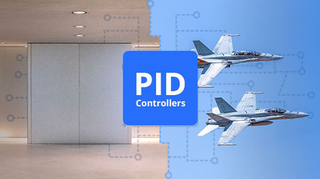PID controller tutorial: Understanding the control design
All the automation, robotics, and software engineering enthusiasts out there – here’s the course created precisely for you! This PID controller tutorial is right here for you to learn about control system design and writing software to create your own PID controller in a simulated environment. The PID controller design skills you’ll develop can be widely applied in industrial control systems and various other applications that require continuously modulated control. One of the best illustrations is cruise control used in cars. Are you up for it? Let’s dive in!
A PID controller tutorial that will provide you with a firm understanding
This proportional-integral-derivative – PID – controller tutorial is designed to equip you with a firm understanding of common control terms (for example, reference, close/open loops, etc.) and leave the course being able to use them in practice. Professionals who compare PID controller to other control algorithms distinguish these several advantages of PID:
- It’s easier to implement (since it’s using a simple equation)
- It requires fewer resources and can be based upon the system parameters
- PID is more robust in terms of tuning mismatches
- It responds to unmeasured disturbances better than other control algorithms
- It’s faster, reducing the time constant of the system.
What are the steps of learning how to design a PID controller?
I have a Master’s degree in Mechanical Engineering, so when teaching you the PID controller basics, I’m going to rest on the techniques I’ve learned in my engineering experience so far, as well as from my studies. I’ve chosen only those lessons that my students found the most valuable when learning how to design a PID controller from me. You’ll get a complete understanding of when the proportional, integral, and derivative components should or should not be used.
This PID controller tutorial will include a simulation of an elevator so you can practice writing control software and check how it works. In such way, you’ll have the opportunity to tune and debug the controller. You’ll learn the correct usage of specific components in the PID controller design and understand what tools can be used for solving various problems.
In more than two hours, we’ll cover the following topics:
- How to set up your working environment
- Physics of the simulator that we’ll use in learning PID controller basics in this course
- Designing your first logic controller and fuzzy logic controller
- Proportional control with closed loop and proportional control
- Derivative control
- Integral control
- You’ll have to finish practical assignments getting clear guidance on what you’ll need to do
A great starting point
Nobody gets born having software engineering skills. My way of getting them was mainly through online courses, so I’ve experienced their potential, and I can recommend this path to others. Right now, I work as a full-time software engineer, mainly in making self-driving cars. Your case will be different, but if you got inspired, hop on this PID controller tutorial, and let’s get started! Thanks for your time.
